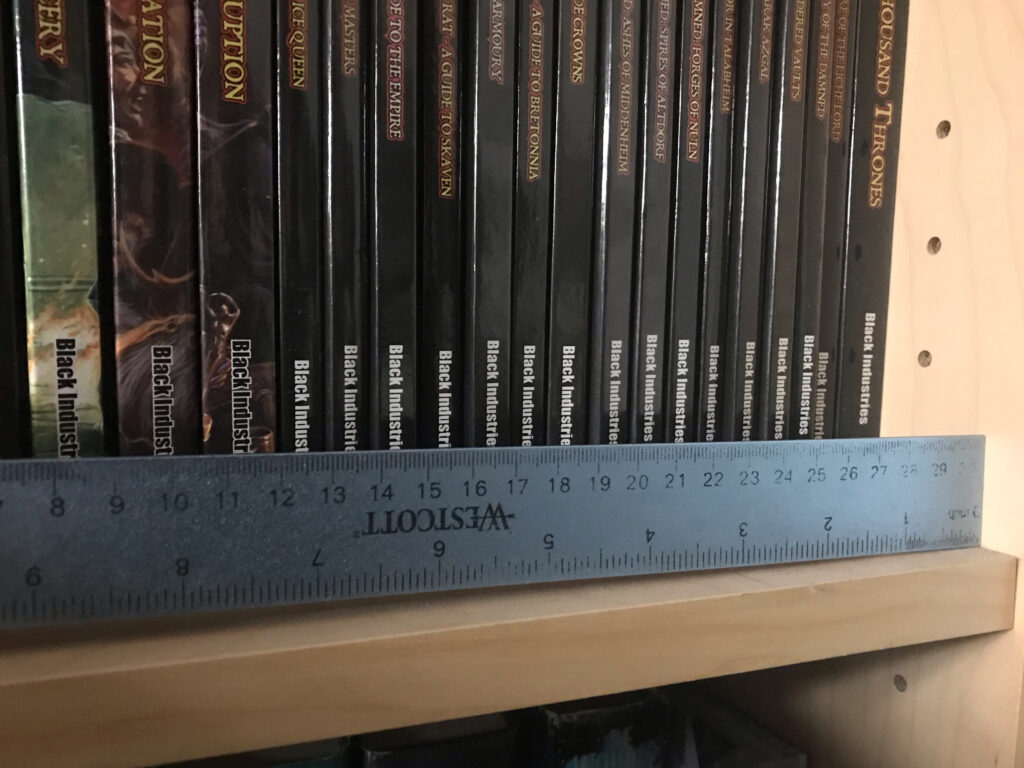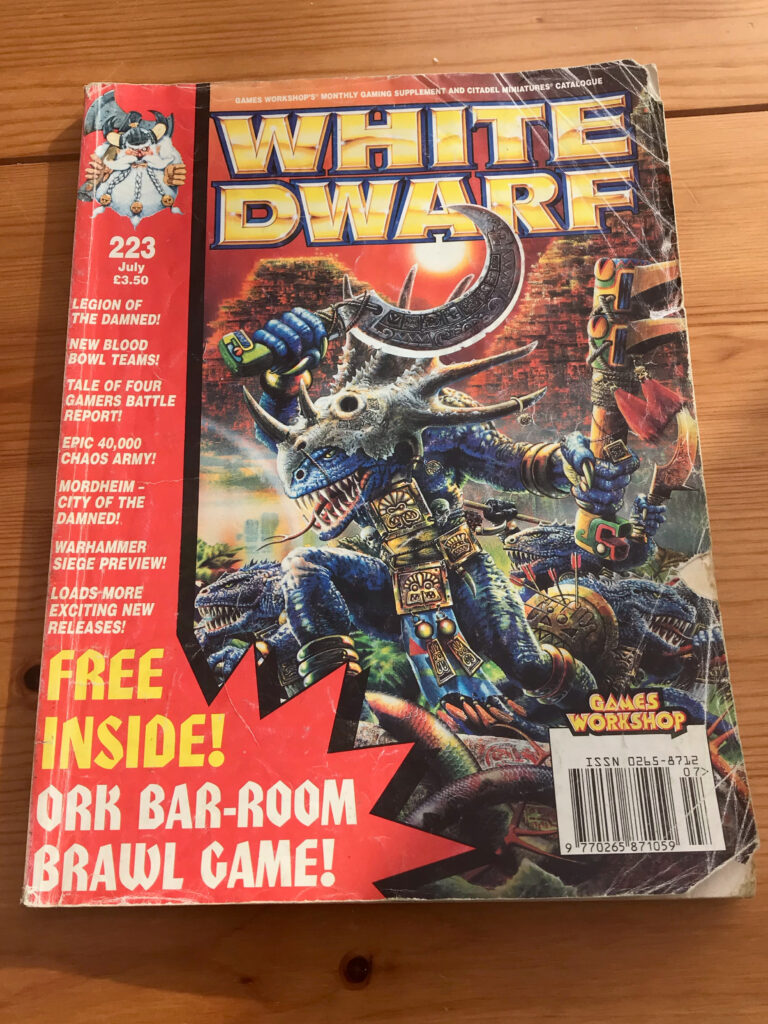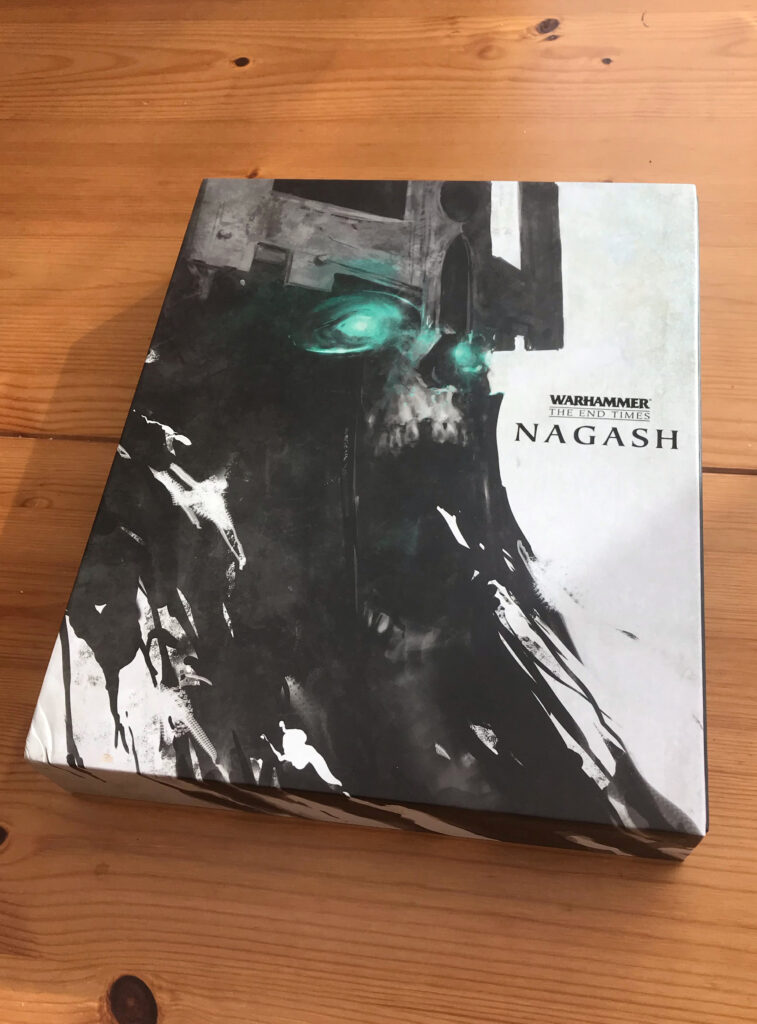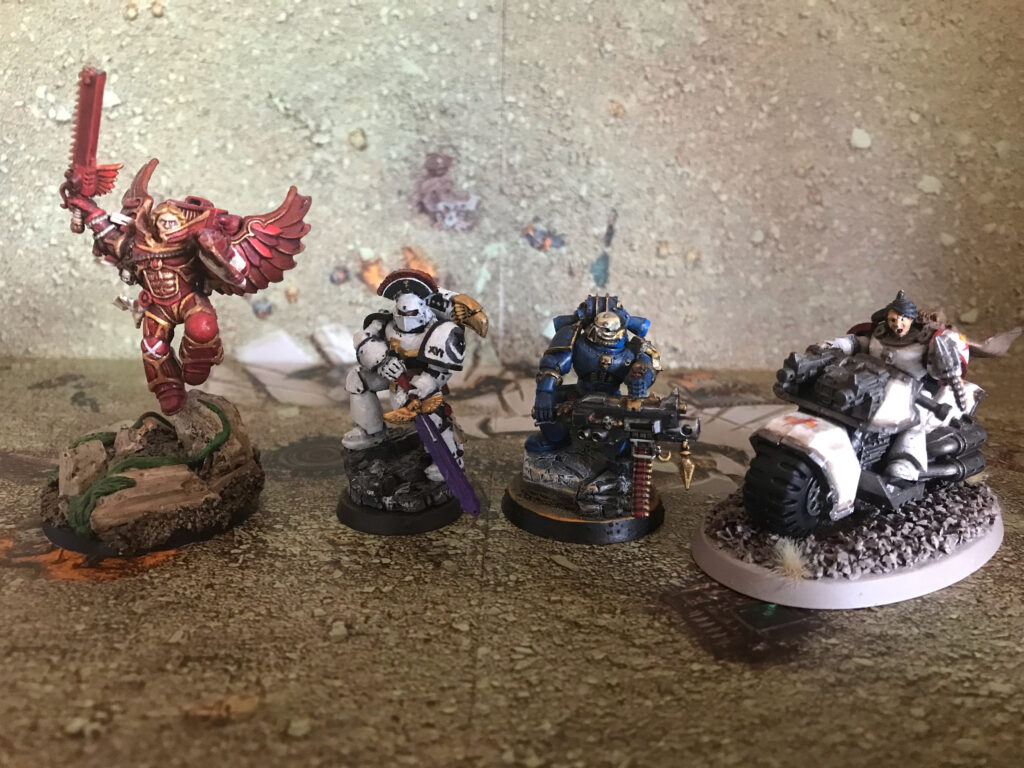From holy text to source of inspiration
There is a shelf in my house that holds one of my proudest possessions. It bends under the weight of it, such that I sometimes wonder if the only reason it is still intact is the supporting structure of further books below, rather than the fine quality Swedish engineering of the bookcase itself. It has moved with me several times, from my childhood home in the English Midlands, to a coastal university in Wales, then to a rented flat and finally to a home I own for myself in the North East. To move it is a back breaking undertaking, requiring careful planning and strong boxes, with a good idea of where it is going to move to, lest you end up having to navigate past an unwieldy pile that really should be somewhere else.
It is a near complete collection of Warhammer Fantasy Roleplay (WFRP) Second Edition sourcebooks.*

*I’m missing Shades of Empire, as well as the various supplementary products such as character sheets. These are things no longer available at any reasonable price.
I exaggerate perhaps. That shelf is ALSO weighed down by a much less complete collection of sourcebooks for the Warhammer 40,000 rpg lines that started with Dark Heresy, books that are both more substantial and greater in number than the 22 WFRP volumes I own (the internet tells me that there are a little over 70 rulebooks and supplements published for the 40k Roleplay line of books. I own 26). But it is WFRP that sticks with me, even some 15 years later. In these books are contained a definitive guide to the Warhammer setting: maps of Middenheim and Nuln, guides to the heraldry of Bretonnia and the clans of the Skaven. Picking a random book from the shelf, I can tell you that the main sanctuary of the Temple of Sigmar in Altdorf is T shaped to evoke a Warhammer, and that over the door is a statue of Sigmar carved by a priest who was renowned in battle but less skilled at stone-carving. There are so many details of this setting defined in print, just ready to explore. This IS the lore: it is written here, I can tell you exactly the answer to any number of questions about this rich, wonderful setting, and I can do the same for the grim darkness of 40k.
I’m here to tell you why none of that matters, unless you want it to.
The lore of the Games Workshop universes is so rich and extensive that it can seem monolithic. Whatever question you ask, there is likely a ‘correct’ answer. Who is Captain of the Ultramarines Second Company? What colour trim do Blood Angels wear? Both of these questions have a ‘correct’ answer, don’t they? But how many people still have Cato Sicarius as Captain of the Second, or black shoulder trim on their Blood Angels per the example of the third edition codex? And how many people have their own Captain of the Second? I haven’t yet finalised a name for my Captain, but I can tell you she is definitely not Sevastus Acheran!
I want to take you on a tour through my personal history with the lore of the Games Workshop universes, and how I went from caring about the ‘correct’ answers in lore to feeling comfortable simply taking inspiration from it and adapting it to my own needs and hobby. It is not an argument that the lore does not matter; rather, it is a story of how much it matters to me, and how my relationship with it has changed over time.
Part 1: Without lore men are beasts
Like many hobbyists, my first exposure to the Games Workshop hobby was a brightly coloured copy of White Dwarf: 223, July 1998, notable both for containing lore for the Legion of the Damned, and the very first article for the game that would become Mordheim.
This was a few months before the release of 3rd edition 40k, and I quickly became enthralled with the hobby. I was no good at painting, and regularly trounced by my brother when we actually had a game, but it didn’t matter: what interested me most was the lore. Two finely detailed settings to explore and imagine stories in. As well as the mainline games, I was able to get my hands on a copy of Necromunda, and over the next few years the options expanded greatly, with Mordheim, Battlefleet Gothic, and Inquisitor released. New factions were introduced as well, and the Index Astartes articles greatly expanded what was known about Space Marines. It was a golden age to be a young nerd fascinated by the minutiae of a setting.

In the early 2000s Games Workshop began to reach out and encourage an online community of gamers. Global campaigns no longer needed to be organised by physical mail, but brought together hundreds of players across the world through online forums. Games Workshop hosted a forum on its own website for a time, and I proudly signed up my custom chapter, the Swords of Lightning, as a participant in campaigns such as Eye of Terror and the Fall of Medusa 5.*
*The Swords of Lightning are a great example of painting self-sabotage. One half yellow, one half silver, with gold helmets and shoulder pads. I wish I’d had the painting resources we do now to dissuade me!
I enthusiastically participated in the story, along with many other custom chapters, but what mattered to me at the time was that I was there, that my chapter had an ‘official’ place in the universe. Having found I enjoyed writing fiction, I began participating in various story threads on the Games Workshop forums, particularly on the Fantasy Battles side of things, which had grabbed my attention most in my early years in the hobby.*
*Continuing my theme of choosing colour schemes that did not suit a new hobbyist, my first army was Bretonnians.
It was late 2006, just after Medusa 5, when Games Workshop abruptly closed their forums. Other forums, like DakkaDakka, already existed, but the former inhabitants of the GW forum drifted to find their own corners of the internet. I joined many of these forums, but the one relevant to this story was a small, lore focussed site that I rapidly became a prominent member and admin of, Old World Chronicles. You won’t have heard of it.
Old World Chronicles was focussed on writing fiction for Warhammer Fantasy Battle. In time, we expanded to include the Warhammer 40,000 universe, and online roleplaying. But even though we were writing our own stories, there was an element of ‘it has to be right’ in my head. I remember my irritation when someone didn’t understand the setting, when they got something ‘wrong’. For my own stories, I was keen to make sure that they tied into existing lore, to which end I keenly pursued the lore books available, to arm myself with the ‘facts’. This recounting of the ‘truth’ of the setting fascinated me, and I didn’t question it, even as I was adding my own details to it.
Looking back, I’m surprised by how short this time period was, given how significantly it still features in my mind. Old World Chronicles lasted maybe 4 years, during which time I developed a solid group of online friends that in time drifted apart. It laid the foundations for my engagement with the lore of the hobby, as something that I could layer my own stories on, but which also had an immutable core. Or so I thought.
The lesson from this era: the lore is a setting upon which one can tell their own stories.
Part 2: I fought the lore and the lore won
Over time, I drifted away from the hobby. Though I was nominally part of my university’s 40k club, I was drawn much more into tabletop and live action roleplay. But I still kept up with the lore. By this time Games Workshop had learned from their earlier campaigns, realising that they couldn’t keep introducing world- or galaxy-threatening story arcs if they didn’t plan to move the story on. So in the late 00s the lore instead delved deeper, defining more and more corners of the current settings without advancing the timeline. The Horus Heresy novels did great work here, vastly expanding the ‘truth’ of the 40k universe, turning a one-time footnote into a vast litany of canon. My preference though was the RPG settings, telling me in detail what the cities of the Old World and the planets of the 41st millennium were like.
But increasingly, I felt the lore creaking at the seams. Why had the Storm of Chaos and Eye of Terror campaigns I had followed so closely not left a mark on the setting? Why were there ever increasing new units I had never heard of, like Space Marine Centurions? What did lore matter if the big events mean nothing, and the small bits can change regularly?
And then the End Times happened.
From my position largely outside the hobby, I was intrigued. I had seen the story hooks, and played along during the earlier Storm of Chaos, so perhaps this was to be the answer to what I wanted, an evolving storyline that made sense of the smaller changes brought about with new model releases. The cost was significant for me at the time, but I bought the first volume, Nagash, looking forward to following the storyline over several years as the timeline slowly advanced, like it always had.

Everyone knows what happened next. I leave it to my past self, posting in 2015, to set out my opinions on the end of Warhammer Fantasy.
“I hope you’ll join me in raising a glass to the memory of the Warhammer setting that provided us with so many tales and fun over the years. In killing the setting, it feels GW has killed a part of me. Of course, it still exists for us to write stories in, but now there will never be anything official ever again. That is sad. GW needed to evolve. Warhammer needed to evolve. But this? This is a travesty.”
The lesson from this era: the lore can change, whether you like it or not.
Part 3: the lore says what the king pleases
It’s fair to say I was completely out of the hobby by this point. While I still had fond memories of the Warhammer settings, I hadn’t set foot in a Games Workshop store for years. My once regular read of White Dwarf had been cancelled, and the models I did have left gathering dust at my parent’s house. I no longer kept up with the lore I had loved.
But then, a friend started an RPG campaign. The pitch was straightforward: a Deathwatch campaign, but set in the Great Crusade. We would be playing a taskforce of Marines drawn from across the Legions, with a view to eventually playing through the Horus Heresy and seeing where we landed. And so was born one of my favourite RPG characters: Brother Isaiah of the Luna Wolves. The characters ranged alongside him ranged from Night Lords to Ultramarines: with such a mix, just playing through the Horus Heresy, beat for beat, was a tantalising prospect.
That wasn’t the plan for this campaign though.
It could have easily just followed events, but the GM recognised that part of the fun would be subverting expectations and presenting us with a game both familiar and different. To cut a long story short, and at great disservice to the experience, the primary antagonist turned out to be the 41st millennium’s version of Abaddon, who was attempting to send followers back in time to disrupt the course of the Heresy. I took great delight in my Luna Wolf combatting Khorne Berserkers with a battlecry of ‘For the Warmaster’ above a planet I knew to be Cadia. Had the campaign continued long enough, I suspect the GM was planning to subvert expectations as to which Primarchs fell to chaos. The campaign went heavily against established lore in many ways, but was enhanced all the more for it: each player knew the setting, and we all revelled in the chance to break it.

While I had other interactions with the hobby around this time, this campaign stands out. Before, I had been almost scared to contradict the lore. I knew it was possible to do, but it felt heretical, something to be avoided. And that thinking extended to cool projects from other hobbyists: a voice in the back of my mind would say ‘that’s not right’. Such things were allowed of course, everyone’s hobby is unique, but not to be celebrated widely. There was a ‘true’ lore from which you deviated at your own risk.
But with this campaign, I came to enjoy the lore as something new, a thing that could be adapted at will, while still being recognisably the same universe. It made me realise what actually mattered to me about the universe: it wasn’t the detail, it was the canvas. We each bring our own thoughts and ideas to the hobby, even the writers and designers in Games Workshop. The only truth is the one we wrote for ourselves. This re-energised me: I wouldn’t worry about ‘keeping up’, and could engage with the lore on my own terms. When 8th edition arrived I was primed to get stuck in once more, only now I would be looking at the lore with a critical eye: where do I fit in? Where do I want to change things?
The lesson from this era then, is a combination of the previous two: you can change the lore to tell your own stories.
Conclusion: Lore unto myself
It is easy to think of the lore for 40k and Warhammer as commandments set in stone, handed down from above, a thing to delve deeply into, looking for answers. I recognise that urge, I’ve been there myself. I’ve seen the gaps in the setting and grasped for the ‘truth’ behind them. But now, from my experiences of being pushed away from the hobby by changes in the lore, and now drawn back in, I realise that I misunderstood its purpose.
It’s a setting for our own stories.
We are the authors. It is on us to decide what should be part of our tales. Our stories flow through the models we paint, conversions we create or narratives we write.
I imagine some people are thinking ‘well, obviously’ here, but it took me a long time to reach the stage of feeling comfortable with this approach to the lore. Looking at the wider community I can see others falling into that trap, revelling in it even. I have many unkind words for those who would use their knowledge of the lore to gatekeep this hobby, and say ‘you’re doing it wrong’; this is not the place for those.
Instead, I offer my lessons, in the hope they give others permission to consider where they might break the lore to enhance their own hobby:
The lore is a setting within which one can weave their own stories, and it can change, whether you like it or not. Therefore, you can and should change the lore to tell your own stories.
The examples in the introduction of this article were not chosen by accident.
My Blood Angels have black trim on their shoulders: that is breaking the lore, even though it is sticking with an earlier design: the lore had changed, I chose not to change with it, as is my right.
Equally, I wanted to find a place for my own Captain of the Second company, who is not Cato Sicarius or Sevastus Acheran. Why the second? I like the gold trim. You don’t need a complex reason to break the lore.
And to finish, I’ll just highlight that the choice of pronoun for my Captain in the introduction was deliberate. Another simple adaptation made to improve my enjoyment of my hobby. That is reason enough for any change. I hope I’ve shown you is that it is possible both to love the lore, and to adapt it to your own needs and enjoyment. I would go so far as to say it is all but required.




